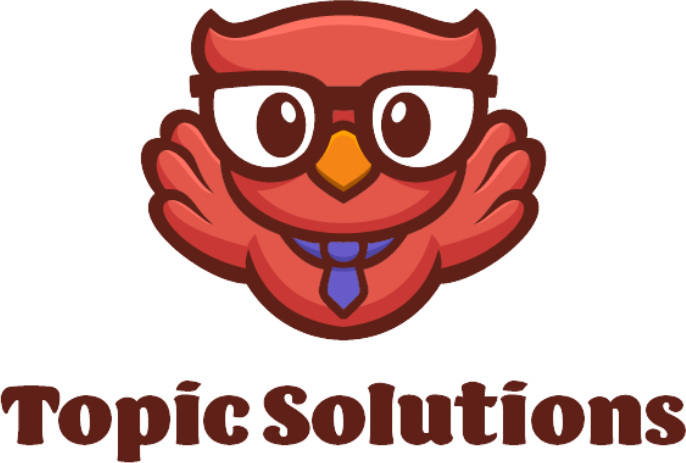In today’s digital workplace, managing employee productivity, ensuring data security, and maintaining compliance are top priorities for businesses. As more companies adopt remote and hybrid work models, implementing employee computer monitoring software has become essential for tracking employee activities and ensuring that work is being carried out efficiently. However, successfully deploying such software requires careful planning and execution to balance organizational needs with employee trust and privacy.
This article will guide you through the key steps for implementing employee computer monitoring software in your organization effectively and ethically.
Define Clear Objectives
Before introducing any monitoring software, it’s critical to define your goals. Ask yourself: Why do you need employee monitoring software? Is it to track productivity, enhance security, manage remote teams, or ensure compliance with legal standards? Clear objectives will help you choose the right monitoring tools and set expectations for both management and employees.
Common Objectives:
- Productivity Monitoring: Ensure employees are staying on task during work hours.
- Time Tracking: Accurately measure the time spent on tasks, projects, and breaks.
- Data Security: Prevent unauthorized access or sharing of sensitive company information.
- Compliance: Ensure that employees adhere to company policies and regulatory standards.
Choose the Right Employee Monitoring Software
There are numerous employee monitoring tools on the market, each offering different features and capabilities. It’s essential to choose software that aligns with your organization’s needs and objectives. Look for a solution that is scalable, easy to integrate with your existing systems, and user-friendly for both managers and employees.
Key Features to Consider:
- Time and Activity Tracking: To monitor work hours and productivity.
- Screenshots and Screen Recording: For a visual overview of employee activity.
- Website and App Usage: To track which sites and apps are being used during work hours.
- Keystroke Logging: Provides detailed records of what’s being typed, though it should be used cautiously to avoid privacy concerns.
- Geolocation Tracking: This is especially useful for remote or field-based employees.
- Compliance and Reporting: Generates reports that help you meet legal and policy requirements.

Example: Monitask is a popular solution for time tracking, activity monitoring, and project management, especially useful for managing remote teams.
Communicate with Your Employees
Transparency is the cornerstone of successfully implementing employee monitoring software. Inform your employees early in the process about why the software is being introduced, what data will be monitored, and how it will be used. Clear communication helps build trust and reduces any anxiety employees may feel about being monitored.
Best Practices for Communication:
- Explain the Purpose: Emphasize that the software is meant to improve productivity, ensure fair workload distribution, and enhance security.
- Detail the Process: Outline what will be tracked (e.g., time spent on projects, website usage) and assure employees that personal data will not be monitored outside of work hours.
- Invite Feedback: Encourage employees to ask questions or raise concerns and address them openly. This can ease the transition and help you avoid resistance.
Establish Clear Policies and Guidelines
Developing clear policies is critical when implementing monitoring software. These policies should outline when and how monitoring will take place, what is being tracked, and the consequences of non-compliance. Clear guidelines protect both the organization and employees, ensuring that monitoring is conducted ethically and lawfully.
Policy Elements to Include:
- What Will Be Monitored: Specify the types of data that will be collected, such as website usage, time on tasks, and keystrokes.
- When Monitoring Will Occur: Clarify whether the monitoring will be limited to work hours or if it extends to company-issued devices used after hours.
- How Data Will Be Used: Ensure that data collected is only used for legitimate business purposes and not for personal surveillance.
- Consequences of Non-Compliance: Outline the actions that will be taken if employees are found to be violating company policies through inappropriate behavior or unauthorized activities.
Address Legal and Privacy Considerations
When implementing employee monitoring software, it’s crucial to ensure that your actions comply with local labor laws and privacy regulations. Monitoring employees without their knowledge can lead to legal ramifications, so understanding the legal landscape in your jurisdiction is vital.
Legal Considerations:
- Consent: In many jurisdictions, employees must be informed and give consent to monitoring. Make sure you have a clear process for obtaining this consent.
- Data Protection: Be aware of data privacy laws like the General Data Protection Regulation (GDPR) in Europe, which places strict requirements on how personal data is collected and used.
- Limit Invasiveness: Monitoring should focus on work-related activities and avoid tracking employees’ personal information, such as private messages or non-work-related activities.

Consult with legal experts or HR professionals to ensure compliance with local and international laws.
Implement the Software Gradually
Rolling out employee monitoring software should be done in phases, especially if you’re introducing it for the first time. A gradual implementation allows you to address potential technical issues, refine policies, and collect feedback from both employees and managers.
Steps for a Smooth Rollout:
- Pilot Program: Start with a small group or department to test the software and identify any challenges.
- Training: Provide training for managers and employees on how to use the software. Ensure that everyone understands the features and how to access reports.
- Collect Feedback: After the initial phase, gather feedback from both managers and employees to address concerns and make improvements before the full company-wide rollout.
Evaluate and Adjust Regularly
Once the software is fully implemented, regular reviews are necessary to ensure that it’s meeting your objectives without infringing on employee privacy. Analyze the data, look at productivity trends, and make adjustments as needed.
It’s also essential to stay updated on any legal or industry changes that might affect your monitoring practices.
Best Practices for Ongoing Monitoring:
- Monitor the Monitors: Review how managers are using the software to prevent misuse or micromanagement.
- Check for Over-Monitoring: Ensure that the monitoring isn’t too invasive or leading to employee burnout or disengagement.
- Update Policies: As your company grows and evolves, review your monitoring policies regularly to ensure they are still relevant and aligned with your business goals.
Conclusion
Implementing employee computer monitoring software can be a game-changer for organizations, particularly in managing remote teams, enhancing productivity, and ensuring data security. However, successful implementation requires a clear strategy, transparent communication with employees, adherence to legal standards, and continuous evaluation.
By taking a thoughtful approach and focusing on ethical practices, you can introduce monitoring software that not only helps your business thrive but also fosters a positive work environment where employees feel supported and respected.




